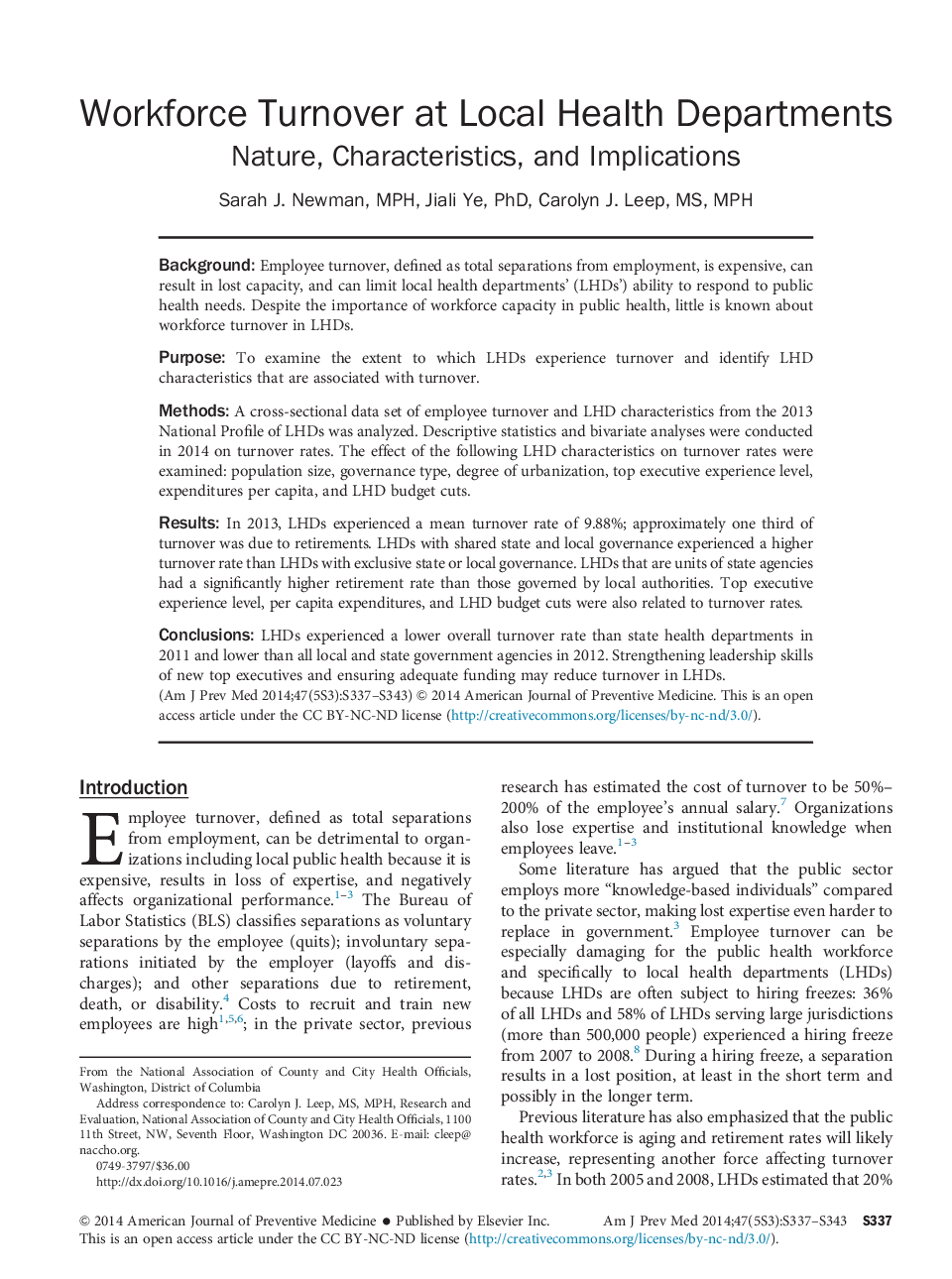| کد مقاله | کد نشریه | سال انتشار | مقاله انگلیسی | نسخه تمام متن |
|---|---|---|---|---|
| 4192370 | 1608649 | 2014 | 7 صفحه PDF | دانلود رایگان |
BackgroundEmployee turnover, defined as total separations from employment, is expensive, can result in lost capacity, and can limit local health departments’ (LHDs’) ability to respond to public health needs. Despite the importance of workforce capacity in public health, little is known about workforce turnover in LHDs.PurposeTo examine the extent to which LHDs experience turnover and identify LHD characteristics that are associated with turnover.MethodsA cross-sectional data set of employee turnover and LHD characteristics from the 2013 National Profile of LHDs was analyzed. Descriptive statistics and bivariate analyses were conducted in 2014 on turnover rates. The effect of the following LHD characteristics on turnover rates were examined: population size, governance type, degree of urbanization, top executive experience level, expenditures per capita, and LHD budget cuts.ResultsIn 2013, LHDs experienced a mean turnover rate of 9.88%; approximately one third of turnover was due to retirements. LHDs with shared state and local governance experienced a higher turnover rate than LHDs with exclusive state or local governance. LHDs that are units of state agencies had a significantly higher retirement rate than those governed by local authorities. Top executive experience level, per capita expenditures, and LHD budget cuts were also related to turnover rates.ConclusionsLHDs experienced a lower overall turnover rate than state health departments in 2011 and lower than all local and state government agencies in 2012. Strengthening leadership skills of new top executives and ensuring adequate funding may reduce turnover in LHDs.
Journal: American Journal of Preventive Medicine - Volume 47, Issue 5, Supplement 3, November 2014, Pages S337–S343
